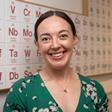A new family of compounds that display activity against multidrug-resistant gram-positive pathogens could represent a new class of antibiotics. One compound in particular, known as PS757, also appears to be effective against skin and soft tissue infections, including necrotising fasciitis caused by Streptococcus pyogenes (S. pyogenes).
The new class of synthetic compounds, named GmPcides were developed by researchers at Washington University School of Medicine in the US and Umeå University in Sweden. The compounds mimic the structures of natural peptides but are altered at various positions to produce molecules with enhanced antibacterial and drug-like activity.
PS757 specifically has previously been shown to have robust bactericidal activity against a broad range of drug-resistant Gram-positive pathogens including vancomycin-resistant Enterococcus faecium, methicillin-resistant Staphylococcus aureus and Streptococcus pneumoniae, all of which are listed as bacterial priority pathogens by the World Health Organization.
In their latest work, the researchers focused on S. pyogenes, a Gram-positive pathogen responsible for a wide range of diseases including scarlet fever, toxic shock syndrome and skin and soft tissue infections such as necrotising fasciitis. Currently the treatment of S. pyogenes infections is complicated by the bacteria’s ability to form biofilms that enhance its resistance to antibiotics and can result in recurrent infections and treatment failure.

In a mouse model of S. pyogenes skin and soft tissue infection the researchers demonstrated that PS757 was effective against all stages of bacterial growth and biofilm formation. They also found that the compound improved treatment outcomes by lowering bacterial burden, reducing tissue damage and inflammation and speeding up wound healing.
Although PS757’s exact mechanism of action is currently unknown, the researchers noted similarities with another antibiotic, daptomycin, which acts by irreversibly binding to bacterial cell membranes resulting in cell death. As cell wall abnormalities were observed in S. pyogenes that were exposed to PS757, the researchers suggested that the compound may also work by targeting membranes.
Ishwar Singh, an expert in antimicrobial drug discovery at the University of Liverpool, UK, believes that the compound’s structure makes this a plausible mechanism of action. ‘The structure is quite hydrophobic, so it is very likely to go after the cell membranes,’ he says.
Singh, who was not involved in the project, is impressed with the results. ‘It’s very early stage, yes, [but] it’s exciting to have the compound and good to see there’s in vivo efficacy in a skin wound model,’ he says.
‘Antibiotics against Gram-positive [bacteria] are very much needed considering the global burden. There are two approaches which people can use: one is short term – taking an existing class … and modifying here, modifying there. But it’s not going to solve the bigger problem,’ adds Singh. ‘We need innovation in the pipeline, innovation of the target, or innovation of the scaffold [and] new classes of antibiotics.’
Singh points out that the US and Swedish team did observe some resistance development in bacteria treated with the GmPcides, but have not provided data on how frequently this occurs. If the frequency is on the lower side, I would say [this] is very, very promising,’ he adds.
References
Z Zou et al, Sci. Adv., 2024, DOI: 10.1126/sciadv.adn7979

















No comments yet